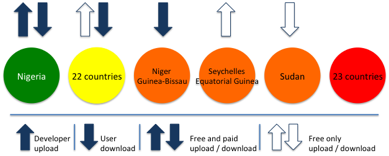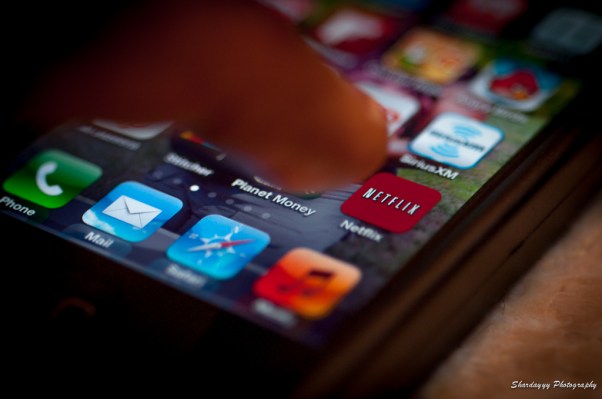Closing the digital divide requires not just providing Internet access for all, but making sure that access enables opportunities for all. Internet access can allow entrepreneurs to turn their inspiration into innovation, and their innovation into income.
Mobile apps, which run on smart devices, represent in many ways an excellent opportunity for entrepreneurs, but also highlight another barrier even for those who are already online.
The app economy is perhaps the easiest e-commerce avenue – once an app is created, the developer only has to upload it to an app store which takes care of the rest: worldwide sales, storage, discovery, distribution, delivery, and payments when relevant. App sales are easier than traditional online sales which require the development of a website, a payment mechanism and distribution, not to mention the sale of physical goods require shipments.
The first mobile app store was introduced by Apple only seven years ago, and apps are now the main way that many interact with the Internet via a wide variety of smart devices including phones and tablets. This popularity has produced an app economy worth multi billions of dollars, generating jobs and income around the world. However, the opportunity is not available to all.
In developed countries, users have a choice of more than a million apps, across multiple platforms, which have been downloaded well over one hundred billion times, and app developers have access to a market of well over a billion users, earning billions in revenue from paid downloads, in-app purchases, and advertising.
By contrast in Sub-Saharan Africa, in only one country – Nigeria – can users and developers buy and sell apps as in any developed country.
Using Google Play availability in Sub-Saharan Africa as an example, the diagram below highlights the app divide. In 22 countries users are able to download free and paid apps, but developers can only make free apps. In another five countries, there are further restrictions on the ability to use apps or make them available. In the remaining 23 countries developers have no options, and it is not clear whether users can even download free apps.

This app divide springs from a general problem with international payments to and from developing countries, which restricts the ability and willingness of app stores to provide payment options for users or developers. The payments issue also restricts the use of other innovative online services important to entrepreneurs, including PayPal, for general e-commerce, and Kickstarter, for crowd-funding new innovations.
The reasons behind the absence of international payments are complicated, opaque, and not consistent from country to country, and must be addressed. Multiple stakeholders including governments, financial institutions, and the private sector must work together to expand the markets for developers to create apps and for users to be able to download them.
Overall, the result leaves a picture of significant lost opportunity: on the one hand, the apps that many people use every day are not available to all; on the other hand, the marketplace for developers to earn their living is also not available. As we focus on closing the digital divide for access, it is important to also close this app divide to ensure that everyone has the opportunity to benefit from the app economy.
